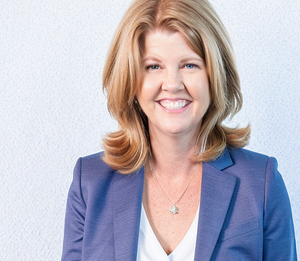An earlier incarnation of the Worketypes had each category name starting with C — and so I called this the 4C Assessment. The name has changed, the the benefit of using this assessment hasn't! Let's dig in.
The Document:
Next Up:
I suggest watching this video next:

The Transcript:
So once you have your team mapped on the 4C's, this is a cheat sheet for how to supply each one of them with the level of detail and the responsibilities and the parameters in which they are going to thrive and do an excellent job for your business. So clerks, we knew this was coming, clerks need dialed in SLPs. They need something to follow.
That is very spelled out with kind of the kinks already figured out. So this needs to be sort of a well-oiled machine and they also need some oversight. So they need probably daily. Although that doesn't indicate that that's a performance issue, it just means that the, their ability to roll with punches is limited. And so there would, there should be someone for whom they can reach out to always available so that they can just go head down and do their work.
And somebody is there to handle any of the blips and leaps that would happen maybe over the course of a week. So if you want clerks looking for problems and errors, and troubleshootings give them a pretty specific definition of what that would be and an SOP to follow. So for instance, this is just an example I had. If open rates fall below X,
then I would like you to do Y. So again, it takes away the judgment calls and really spells out something specific that they're looking for. And then they know what to do if they spot it. So this is best for repeating tasks that don't require judgment calls and it does need oversight and management. So moving up to custodians, they need a well scoped project with a clear idea of what done looks like,
and what's inbounds and out of bounds for the project. I hope that sentence sounds very familiar to you because that's what a design brief is designed to shoot for. So if you are creating good, well scoped projects with your design brief, you are speaking a custodian's language. So they love to receive parameters and SLPs that are, that are embedded in that,
for instance, let's say this is a customer service person. If it costs a hundred dollars or less to fix you handle it, I don't even need to know about it, but anything over that come to me with your best recommendation that is very comfortable for a custodian to hear. And they should feel comfortable putting that into daily operation, give them KPI metrics that they can monitor and shoot for.
That gives them they're sort of left and right limit. If you think about driving a car and looking at all, the dials custodians are excellent at keeping things within tolerable limits. So tell them what those tolerable limits are, and they will do their excellent vest to keep them within limits. And then, you know, raise the flag if, if it goes outside one way or the other.
So custodians are best for areas in the business that are on autopilot. And I put that in air quotes because there's no place in any business I've ever known. That's on autopilot, but you can see what I mean. It's something that's more smooth. Maybe it's fulfillment that happens the same way each time, something like that. But if you pair a custodian with a champion or a sea sweeter,
they actually can be responsible for projects that are more influx. They just need to have a regular good access to somebody like a champion or a C-suite or in order to get their questions answered and to keep them moving. So a champion is going to sound a lot like a custodian here. You don't get off the hook with scoping your projects well and identifying your constraints and expectations.
The difference with a champion is that they can participate in scoping them and creating a clear idea of what done looks like. So they're actually at the table helping you make the tiny decisions and clearing up the expectations. They also can manage the prototype, builds the phases or the candidate build phases. And I have a link here to the, to the lesson,
five done RX worksheet that talks about prototyping and candidate builds. They can manage the custodians and clerks and they can project manage other champions and C-suite, they should feel very comfortable project managing<inaudible> and project managing you the CEO. And they should have regular access to either you the CEO or a C-suite or so that they can get check-in and guidance. They cannot operate autonomously,
but they can operate with guidance and go for long periods without a lot of daily interaction with you. So I would like to see project managers here at the champion level. I think that is the best. It's better for the project manager. And it's better for the business. If project managements, the project managers operate as champions. No, I have seen them operate as custodians.
That's just a little tricky and everyone seems to need to be on their best game if it's a custodian, because they, you know, because of who they are, they tend projects can get better managed as champions. That's just how it is. They're able to roll with the punches. They're able to speak truth to a wider number of people they're able to corral better.
They're able to troubleshoot little dependency problems without constantly going upwards to get top cover or to get additional guidance. So I do like to see project management here. I also like to see people management here, you do not have to wait until a C-suite sweeter in order to have people supervising other people, champions are perfectly capable of doing that. They are also able to handle.
So here I say that parts of the business that are on autopilot. Well, these people are able to handle parts of the business that aren't on autopilot that do have a, that do require rolling with the punches. Champions can roll with the punches as Long. They have guidance and access to other people when they need it. So see sweeteners. You want to share your very highest level goals,
whatever constraints and expectations that you do have, but then you want to set them free because they're sitting on expertise of their own and should be telling you how best to get to whatever done looks like. And they may even be the person who tells you what the best version of done is for what you want. So they're telling you how they're going to get it done.
Now you need to have good visibility into their performance and you need to hold them accountable. So they're not, you don't give them the keys to the kingdom and they come back six months later with something, but you do give them wide latitude to hit their goals. And so the outside experts who come in and perform a service, that's really esoteric like Facebook ads,
sometimes funnel building, and some of that expertise sits outside the team. And it's a see sweeter. Or if you have a, you know, a deeper business, you have maybe a little bit more head count, or it's just more complex. You have department heads that are C-suite or higher. So that's how it shakes out. If you have questions,
if you have a project and you're wondering, how do I make a project look like this, because I need to turn it over to a custodian. That's an excellent question for which the answer requires a good level of detail into exactly what you're talking about. So bring a question like that to a weekly call, where we will workshop it. I promise you you'll come up to speed quite quickly on what it means to hit each of these four areas,
as far as the level of detail that you need to present to the person. But sometimes it requires some workshopping to get there at the beginning. So bring them to our calls.










Member discussion